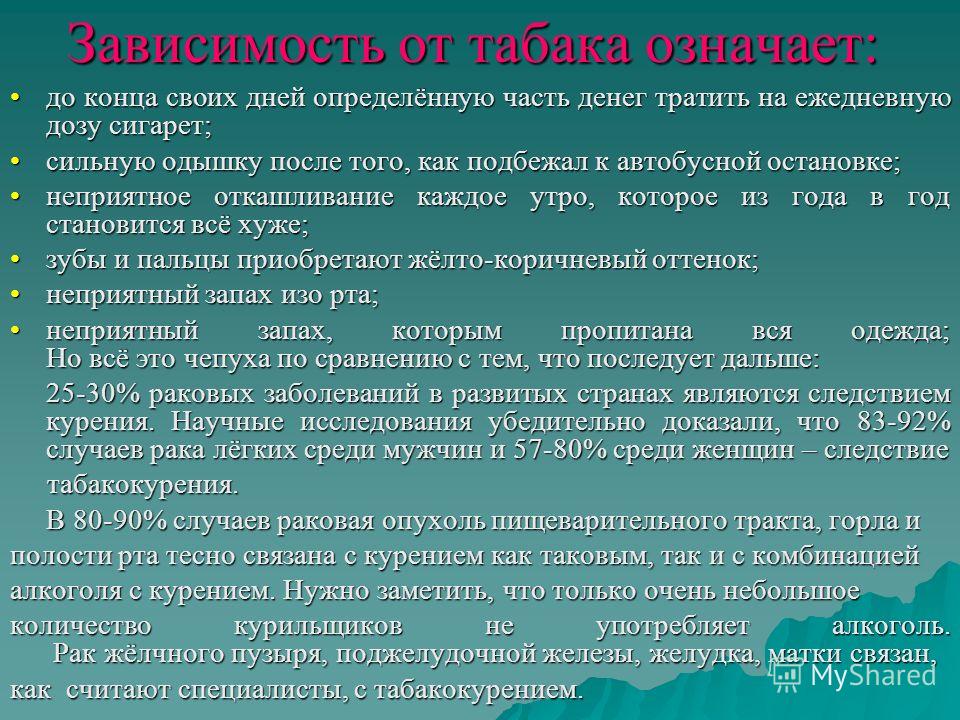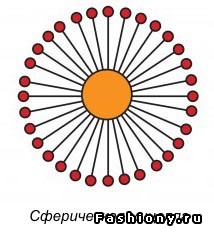Effect of pav on human health. Pea in the home and in the garage
All kinds of cleaning products in the widest range of today are represented by modern industry. Today everyone knows laundry detergents, soaps, gels, floor and window care products, and so on. Absolutely all of these tools are necessarily present surfactants - surfactants. In fact, the ability of the tool to remove dirt depends on them.
How surfactant works
Any contamination containing grease is almost impossible to remove with ordinary water, which will simply drain from the surface. Everything is very simple: particles of water do not stick to the fat, so it remains in place. The task of the active substance is precisely to bind the fat with water, which will help remove it from any surface. Depending on the class of cleaning agent, the content of surfactants in it, and their structure, is different.
The protective shell of the human body is also composed of fat, so it is extremely important to use any tool in gloves. Nevertheless, you should know that modern products are environmentally friendly and practically safe, so their short-term direct contact with the skin will not cause any negative effects. Thus, the possible harm can occur only in the case of professional activities related to such substances.
Types of surfactants that can be found in modern life
Depending on their chemical origin, all surfactants are classified into several types:
- non-ionic - dissolving in soda does not contribute to the formation of ions. The main advantages that distinguish these substances are their non-aggressiveness with respect to the surface or fabric and one hundred percent environmental friendliness;
- cationic. Easily dissolved in water, while forming positively charged ions. In addition to cleaning, also have disinfecting properties. Among the cationic substances, ammonium quaternary compounds and imidosalines can be particularly distinguished;
- anionic. Dissolve in water and contain negatively charged ions. The main advantages that ensure the popularity of products with their maintenance are low cost, excellent solubility and worthy efficiency. However, you should not get too carried away with the use of such cleaning products, as they are quite aggressive to human skin;
- amphoteric. These surfactants are interesting because, depending on external factors, they can produce both positive ions and negative ones.
Modern manufacturers are well aware that it is necessary to make their funds as safe as possible, so the production technology is carefully monitored. For maximum safety, biological components are necessarily present in the product.
The use of surfactants in everyday life
In everyday life it is impossible to do without the use of special detergent compositions. For their maximum effectiveness, the use of active additives has long become the norm. So, we can see them in the following means:
- soap. This product is familiar to everyone since childhood. We could hardly do without the usual bar, which has a pleasant aroma and helps to remove even serious pollution without much difficulty;
- washing powders. Manufacturers are forced to constantly improve the funds that enter the market, because otherwise their place will be borrowed by more successful colleagues in the shop;
- conditioners. Hair that has a length above the average, must be treated with a rinse - this is known to every woman who looks after her appearance;
- shampoos Each person uses this tool to flush fat from the hair and scalp. If necessary, you can choose the option of dandruff or high fat, to get the desired flavor is also not difficult;
- compounds for cleaning clothes and carpets. Even a small speck on clothing can permanently spoil the mood. Moreover, to get rid of it, dry cleaning may be the only obvious option. However, it is enough to simply buy a quality product to get a great result with minimal effort.
In order to cope with the majority of everyday tasks, it is usually enough just to choose the right means.
Surfactant for motorists

Of course, the active substances are contained in the tools that motorists use to maintain their pet in excellent condition:
- shampoo. Specially selected composition that will allow the car body to be cleaned of any contamination using an ordinary sponge;
- hard wax It is necessary for reliable protection of the paintwork surface. Usually, this composition is applied after the polishing procedure with a dense fabric. The process does not require special training;
- polishing and lacquer formulations. Designed to give the car a pristine appearance by restoring its varnish. For application will require a mechanical device;
- detergent composition for glasses. It can be applied directly to glass that needs cleaning, or added to water;
- composition for cleaning the cabin. Effectively removes all types of dirt from plastic, plating and other surfaces;
- gel for wheels and wheels. The composition varies depending on the material from which the surface is made. May have a different abrasive structure;
- engine cleaners. These funds can only be used in cars of previous generations. The fact is that modern cars are equipped with a large number of electronics, many of which are under the hood. Even a small ingress of water can disrupt the operation of sensitive equipment.
Thus, in our days it is simply impossible to do without surfactants, which are designed specifically to make life easier for everyone. Nevertheless, it is believed that the use of such compounds can adversely affect health.
Safety when using surfactants
It should be clearly understood that any modern means for washing or cleaning must contain active substances. Without their presence in the composition of the application of any means simply would not make sense. Virtually all manufacturers use a substance such as laureth sulfate to make their cleaning products more effective. Indeed, in its pure form, this substance has a fairly strong aggression. Nevertheless, given its concentration in the final product and a lot of herbal supplements, we can safely say that any harm is practically zero. Few people use gloves when washing dishes or car. However, cases of allergic reactions are rare. Thus, we can safely say that a properly selected, balanced composition of the components allows minimizing the negative effects and bringing them to zero.
Recently, the interested authorities impose increasingly stringent requirements on the quality of cleaning products. This is due to the fact that previously used additives required a long time to neutralize in natural conditions. Today's surfactants are biodegradable compounds, which means their ability to completely decompose under natural conditions without any external influence. Such substances do not harm the environment and the people who use them.
In order not to worry about the health of yourself and loved ones, a careful solution will be a careful study of the composition of the purchased product, which is always on the label. This is especially true for people who have various types of allergies. Such a precaution does not take much time, but will help to get a really high-quality tool. If the label does not indicate the composition of the product and the active components included in its composition, this is a serious reason to think.
Get a decent quality at an affordable price is very simple. In fact, it is enough to give preference to brand products so that all doubts are left in the past. Perhaps this solution will cost a little more, but the result will exceed all expectations.
Tobacco, cigarettes, smoking The active substance in tobacco is nicotine. The active substance in tobacco is nicotine. Tobacco is made from the dried leaves of the plant. Tobacco is made from the dried leaves of the plant Nicotiana. Tobacco is smoked in the form of cigarettes, pipes Nicotiana. Tobacco is smoked in the form of cigarettes, pipes or cigars, but it can also be sniffed or cigars, but it can also be sniffed or chewed. chew. Causes moderate physical and very strong mental dependence. Causes moderate physical and very strong mental dependence. Over time, you need to increase the dose to get the same effect. Over time, you need to increase the dose to get the same effect. Short-term effects: excitement, shaking hands, heart palpitations, cough, cold fingers and toes, irritated eyes. Short-term effects: excitement, shaking hands, heart palpitations, cough, cold fingers and toes, irritated eyes. With prolonged use: deterioration of general physical condition, cardiac and cardiovascular diseases, bronchitis, cancer. With prolonged use: deterioration of general physical condition, cardiac and cardiovascular diseases, bronchitis, cancer.

Tobacco addiction means: to spend a certain part of the money on a daily dose of cigarettes until the end of their days, to spend a certain part of money on a daily dose of cigarettes until the end of their days; severe shortness of breath after running to the bus stop; severe shortness of breath after running to the bus stop; unpleasant coughing every morning, which from year to year gets worse; unpleasant coughing every morning, which from year to year gets worse; the teeth and fingers acquire a yellow-brown tint; the teeth and fingers acquire a yellow-brown shade; bad breath; bad breath; unpleasant smell, which is saturated with all clothes; But all this is nonsense compared to what follows: unpleasant smell, which is saturated with all the clothes; But all this is nonsense compared to what follows: 25-30% of cancers in developed countries are the result of smoking. Scientific studies have convincingly shown that 83-92% of lung cancer cases among men and 57-80% among women - 25-30% of cancers in developed countries are the result of smoking. Scientific studies have convincingly shown that 83-92% of lung cancer cases among men and 57-80% among women are due to tobacco smoking. tobacco smoking. In 80-90% of cases, a cancerous tumor of the digestive tract, throat and oral cavity is closely associated with smoking as such, and with a combination of alcohol and smoking. It should be noted that only a very small number of smokers do not consume alcohol. Cancer of the gallbladder, pancreas, stomach, uterus is associated, as experts say, with smoking.

It is assumed that due to smoking the risk of leukemia (blood cancer) is higher. More than 20 deadly diseases can be caused. More than 20 deadly diseases can be caused by smoking, like lung cancer, heart disease, chronic bronchitis and other respiratory diseases, etc. Mortality among middle-aged smokers (35-60 years) is three times higher than among non-smokers. Of the teenagers who smoke, one in four will die from smoking-related illnesses. Tobacco smoking reduces life expectancy by years (daily by 15 minutes). Half the deaths due to smoking are middle-aged (people live 20 years less than non-smokers). Every year around the world, approximately one person dies for reasons related to smoking. The number of people who will die in the first half of the 21st century for reasons of smoking will be man.

Alcohol, alcohol The effect of alcohol on the nervous system, the alcohol content in the blood Alcohol from the stomach enters the blood two minutes after drinking. Blood carries it to all cells of the body. The first to suffer are brain cells. The formation of complex movements slows down, the ratio of excitation and inhibition processes in the central nervous system changes. Under the influence of alcohol, voluntary movements are disturbed, a person loses the ability to control himself. The penetration of alcohol to the cells of the frontal lobe of the cortex liberates a person's emotions, an unjustified joy, stupid laughter, and ease of judgment appear. Following the increasing excitation in the cerebral cortex of the brain, a sharp weakening of the processes of inhibition occurs. A person loses restraint, shyness, he says and does what he never said and would not do while being sober. Each new portion of alcohol increasingly paralyzes the higher nerve centers, the activity of the lower parts of the brain begins to predominate: coordination of movements, such as eye movements (objects begin to split up), are disturbed, and a clumsy staggering gait appears. Disruption of the nervous system and internal organs is observed with any use of alcohol: disposable, episodic and systematic.

The destroyer of a growing organism. Modern studies allow us to reasonably assert that there is no human body. Modern studies allow us to reasonably assert that there are no such organs and tissues in the human body that would not be affected by alcohol. Once in the body, it is quite slowly (at a rate of 0.1 g per 1 kg of body weight per hour) is broken down in the liver. And only 10 percent of the total amount of alcohol taken is excreted from the body unchanged. The remaining alcohol circulates with the blood throughout the body until the whole is broken. The high permeability of "young" tissues, their water saturation allows alcohol to quickly spread throughout the growing body. Even small doses of alcohol affect the exchange in the nervous tissue, the transmission of nerve impulses. At the same time, the work of the cerebral vessels is disrupted: their expansion occurs, permeability increases, hemorrhage into the brain tissue. In adolescence, the brain tissue is poorer in phosphorus, richer in water, is in the stage of structural and functional improvement, so alcohol is especially dangerous for it. Even one-time drinking can have the most serious consequences. Repeated or frequent use of alcohol has literally devastating effects on the psyche of a teenager. At the same time, not only the development of higher forms of thinking, the development of ethical and moral categories and aesthetic concepts is delayed, but also the already developed abilities are lost. The teenager that is called "grows dull" both intellectually, and emotionally, and morally.

The second "target" of alcohol is the liver. It is here, under the action of enzymes that it splits. If the rate of entry of alcohol into the cells of the liver is higher than the rate of its breakdown, then an accumulation of alcohol occurs, leading to the defeat of the liver cells. Alcohol disrupts the structure of the liver cells, leading to the degeneration of its tissues. With the systematic use of alcoholic beverages, fatty changes in the liver cells lead to the necrosis of the liver tissue. Cirrhosis of the liver develops, a very terrible disease that almost always accompanies chronic alcoholism. The effect of alcohol on the liver of a teenager is even more destructive, since this organ is in the stage of structural and functional formation. The defeat of the liver cells leads to disruption of protein and carbon metabolism, the synthesis of vitamins and enzymes. Alcoholic beverages, one might say, "eat away" the mucous membrane of the esophagus, stomach, violate the secretion and composition of gastric juice, which complicates the process of digestion and, ultimately, adversely affects the growth and development of adolescents. Thus, alcohol weakens the body, inhibits the formation and maturation of its organs and systems, and in some cases, for example with abuse, and completely stops the development of certain functions of the higher nervous system. The younger the body, the more pernicious the alcohol is. In addition, the consumption of alcohol by adolescents much faster than in adults leads to the formation of alcoholism in them.

Silly reasons to start drinking The Hangover. If you really want to spend the day rushing from a throbbing headache, you have such an opportunity - get drunk. Because of alcohol, you feel like an "adult." What is special about it? Often adults drink to forget that they are already adults with all the inherent responsibilities. In other words, they are trying to feel like children again! From imitation of infantile adults you should not really feel like adults. Drink to forget about problems. Believe me, your problems will not go anywhere after you sober up. Drink to be accepted by friends. You heard about the "pressure from the group." Friendship, built on alcohol, does not last long. These friends will depart for the same reason that drinking becomes boring - it is always the same. This is not real friends, this relationship goes nowhere. When you build friendships around common interests, sports or other activities, your relationship will grow. This is a much stronger foundation for friendship than a common bottle ... Drinking from curiosity. There is really nothing mysterious about alcohol. After some time, alcohol will lose its charm. That is why many adolescents develop an addiction to alcohol. When alcohol begins to lose appeal, they need more alcohol to get pleasure, often they lose the ability to get it in other ways. Soon they will lose the chance to study well, lose their health, and the trust of their families and friends.

What everyone should know about drugs Drugs are substances of natural or artificial origin that change the human mind. This means that they change our feelings, mood, thinking. Drugs change the perception of the world. You can become more cheerful or relaxed, but sometimes sad and depressed. The effect can be stimulating, hypnotic or hallucinogenic. Stimulating drugs include: alcohol (in moderate doses!), Tobacco, caffeine, cocaine, and amphetamines. Hallucinogens include: acetone, glue, some mushrooms, LSD, ecstasy, hemp, and hashish. By inhibiting - opium, morphine, heroin, sleeping drugs and tranquilizers. Some of them, such as alcohol and tobacco, are legal drugs and can be purchased without restriction. Other drugs, such as hemp or opiates, are illegal. Russian laws prohibit the use and storage of drugs and recognize it as a crime. All drugs have one thing in common: they are detrimental to physical and mental health. This damage can range from minor to destructive. Another feature of drugs: it is easy to start using them, but it is very difficult, sometimes even impossible, to stop. This is due to the occurrence of addiction. There is a difference between mental and physical dependence.

Physical dependence is expressed by the manifestation of the body's protest against Physical dependence is expressed by the manifestation of the body's protest against the cessation of drug use (withdrawal syndrome or "withdrawal"). This applies in particular to alcohol and opiates. Another manifestation of it is tolerance. It is expressed in the fact that with regular use of drugs, more and more drugs are required to achieve the same effect. Mental addiction means that a person feels the need to take drugs all the time. At the same time, the ability to feel good without drugs is increasingly lost. A person who uses narcotic substances risks becoming mentally dependent. The timing of this dependence depends on personal characteristics and other factors. Drugs affect the center in the brain, which is responsible for promotion. When this occurs, the release of dopamine in the blood and the person feels arousal. But drugs have a negative effect on the human body. First of all, they relieve pain and reduce the pain threshold of sensitivity. Drugs affect the respiratory center and drug addicts often die from paralysis of the respiratory center as a result of an overdose. Drugs also affect the cough center for drug addicts. The protective cough mechanism is turned off. Drugs contribute to the inhibition of the vasomotor center, and as a result, a decrease in blood pressure and slow pulse. For this reason, the functions of the cardiovascular system deteriorate, the functions of all cells weaken, and the whole body becomes weaker, as in old age. Drugs inhibit the mechanisms of regulation of digestion, drug addicts dull all taste and smell, decreases appetite, decreases production of enzymes, bile, gastric and intestinal juices. Food is not fully digested and digested. Drug addicts condemn themselves to chronic starvation and are underweight.

The state of addiction is characterized by three properties: 1. An irresistible desire or need to continue to take drugs and get them by any means. 2. The desire to increase the dose. 3. The dependence of mental and sometimes physical nature of the effects of drugs. Syndrome of addiction occurs only as a result of taking a drug. The stages of this process are mainly the following: initial euphoria, often very short-lived; tolerance is temporary. Gradually, the body reacts less; addiction; absistency (withdrawal syndrome), comes the body reacts less; addiction; absistence (withdrawal syndrome), occurs 12–48 hours after stopping taking 12–48 hours after stopping taking a drug. the drug.

Recently, reading reviews of various cleansers, I often come across almost panic fear of lauryl and laureth sulphates. There are many sites on the net that tell about the dangers of "chemistry" and recommend using only organic cleansers. Generally speaking, this is just nonsense. SLS and SLES are themselves organic compounds, as well as a good 90% of the composition of any cleaning agent (if you do not take into account water, of course). It would be more correct to call “organic” natural, but, unfortunately, the name has already taken root. The same applies to the notorious "chemistry" - everything around can be dubbed by this very word, because everything that surrounds us, and we ourselves consist of complex and not very chemical substances.
What is a surfactant?
Surfactants are called surfactants, they are tensio-active substances, they are also sufractants. As can be seen from their name, these substances exhibit surface activity - they lower the surface tension at the interface, thereby stabilizing the dispersed system. (A dispersed system is called exactly the one that has a phase boundary - these are foams, emulsions, suspensions, aerosols, fogs, etc.). In the normal state, such a system has an excess of surface energy, and, striving for equilibrium, it collapses very quickly. For example, if you pour water into the pan, in which the oil is left, then with stirring the size of the oil droplets will be small, but as soon as you stop, they will instantly stick together. And if you add a little cleaner there, then sticking will not occur.
Why are surfactants used in detergents?
Let's start with the fact that grease or dirt, as well as the remnants of cosmetics, mostly non-polar hydrocarbons, are poorly washed off with water, because water is a polar solvent, and like is dissolved in like. The surfactant molecules are diphyl — they have both polar and non-polar parts. Once in the water, they tend to unite and turn so that their polar parts face the water, and the non-polar “tails” are located inside. Such aggregates are called micelles. (Yes, micellar water also works on this principle). The fat is drawn into the micelle and dissolved there due to the phenomenon of solubilization. In order for micelles to form, several conditions must be met: the surfactant molecule must be long enough, the surfactant concentration must exceed a certain value. The use of several surfactants in detergents allows you to reduce the required concentration. Thus, the surfactant dissolves dirt and grease, and then washed off with water.

I would like to mention the addition of various oils in the shampoo. As you know, oil and fat are substances of the same type. And if shampoo easily copes with fat, then there will be nothing left of the oil on your head. Better then separate the ends of your hair or make a mask.
What are surfactants?
1) Cationic - the most toxic and practically not susceptible to decomposition. Possess bactericidal activity. Active in an acidic environment.
2) Anionic - softer, cheaper. Show activity in the alkaline environment. In detergents are used more often than others.
3) Ampholytic or Amphoteric substances. Act in both acidic and alkaline medium. Practically do not apply due to the high cost.
4) Non-ionic - the softest and most biodegradable.
What is the harm of surfactant for the body?
Our skin has a protective lipid film. Because Surfactants can not act selectively, then destroy it, as a result of which the skin loses moisture and becomes more sensitive. A number of surfactants can enter the body and accumulate there, and some can cause irritation or act as carcinogens.
Some say that surfactants can penetrate the hair / skin and accumulate in the body, causing terrible diseases. This is, of course, nonsense. To do this, keep the tool on the skin for hours.

What is the harm of surfactants for the environment?
Very often, sewage treatment plants do not cope with surfactants and they end up in drinking water, then entering the human body. Or they pollute the nature. If the surfactant is not biodegradable or poorly degradable, then it easily penetrates into various organisms and exerts its destructive influence. Surfactants can also release heavy metal ions from sand or clay, increasing the chance of these substances entering the human body. By accumulating in the ocean, surfactants reduce carbon dioxide and oxygen retention.
Is it really that bad and you can't use surfactants?
This is not true. Fighters for the environment need to remember the huge number of plants that process oil, the burial of harmful substances, the exhaust gases of transport and other things that pollute the planet much stronger.

In addition, surfactants are used not only in the cosmetic industry or as a cleansing agent. There are surfactants created for the textile, leather, paper industry, they are used in cooking (this is all sorts of emulsifiers) and for other purposes.
Of course, it is best to use expensive and least harmful, mild surfactants (which will be discussed below), which completely decompose and do not cause irritation.
But even if you find the inscription *** laureth sulfate or *** lauryl sulfate on your shampoo / cleanser bottle, it does not fall into despair and throw away the remedy. Just wash it off especially carefully and be sure to use balm. And if this is a cleanser, then you still (I hope) use tonic and moisturizer that prevents dehydration. If the tool does not cause irritation and does not dry YOUR skin, then you can safely use it further.
"Good" and "bad" surfactants.
The most harmful include:
1) Lauryl sulfate (lauryl sulfate) - the most aggressive, can cause allergic reactions, promote hair loss and dandruff, aggravate the condition of patients with atopic dermatitis.
2) Laureth sulfate - softer than lauryl sulfate, but can dry the skin, so it is recommended to keep it on the skin for a short time and thoroughly rinse.
Some sources write about the supposedly mutagenic, teratogenic and carcinogenic effects of these surfactants, but research by the US Department of Labor, the International Agency for Research on Cancer, the Personal Care Products Council, the American Cancer Society, the Australian Department of Health and NICNAS - an Australian organization that tests the safety of industrially produced chemicals connections, this is refuted. SLS and SLES do NOT interact with DNA and do NOT cause cancer, and also DO NOT adversely affect the fetus.
However, some amount of dioxane may be contained in Laureth sulfates. This substance, which irritates the eyes and the respiratory tract, may be a human carcinogen (as it is a carcinogen for animals) and affects the central nervous system, liver and kidneys.
So, to the number of “bad” surfactants we shall refer: ammonium lauryl sulfate (ALS), ammonium laureth sulfate (ALES), sodium myreth sulfate (SMS), sodium myristyl ether sulfate (SMES), sodium lauryl sulfate (SLS), sodium laureth sulfate ( SLES).
And among the “good ones”: Lauryl Glucoside, Disodium Laureth Sulfosuccinate, Sodium lauryl sulfoacetate, Coco-glucoside, Sodium Lauroyl Sarcosinate, Sodium Cocoyl Sarcosinate (found information that in some cases Sarcosinates can form carcinogenic compounds, they need to go on to get into the realm of natural sarcosinate)
Findings:
1) Surfactants - not as bad as they say.
2) There are certain standards for the content of harmful substances in cosmetics and detergents / detergents, so you should not worry about your health.
3) If you have a choice, it is better to avoid SLS and SLES and choose non-ionic surfactants in shampoos.
4) Shampoo should be thoroughly washed off and it is desirable to use a balm.
5) Washing with foam / gel, you should not forget about other stages of daily skin care.
6) It is necessary to treat any incoming information critically.
That's all I wanted to talk about surfactants. I hope the article did not tire you.
Thanks for attention. Be healthy and beautiful!


